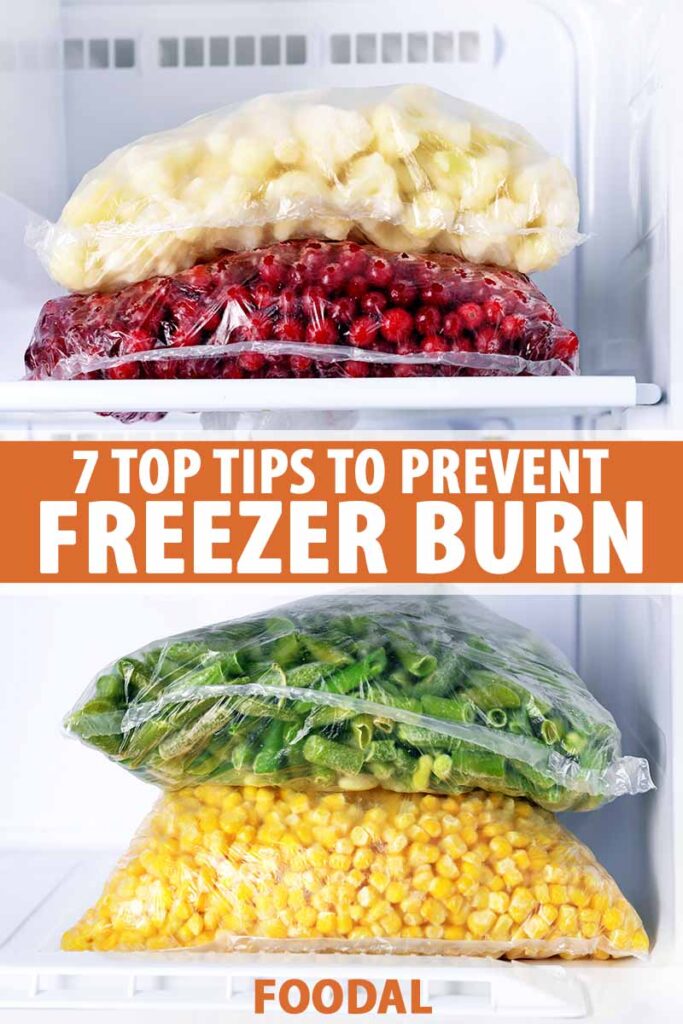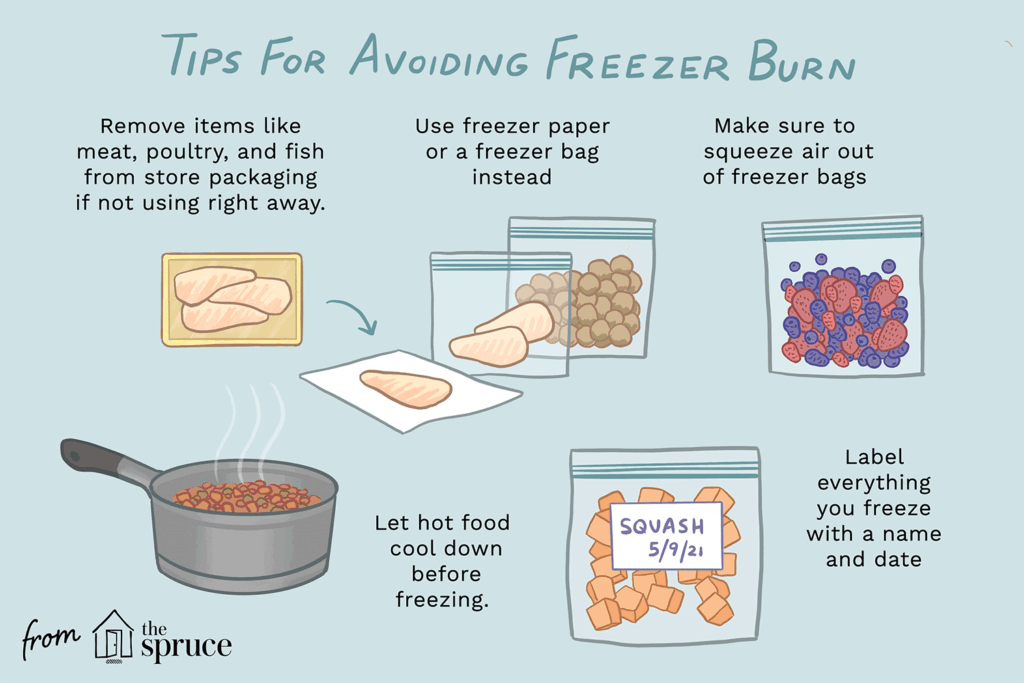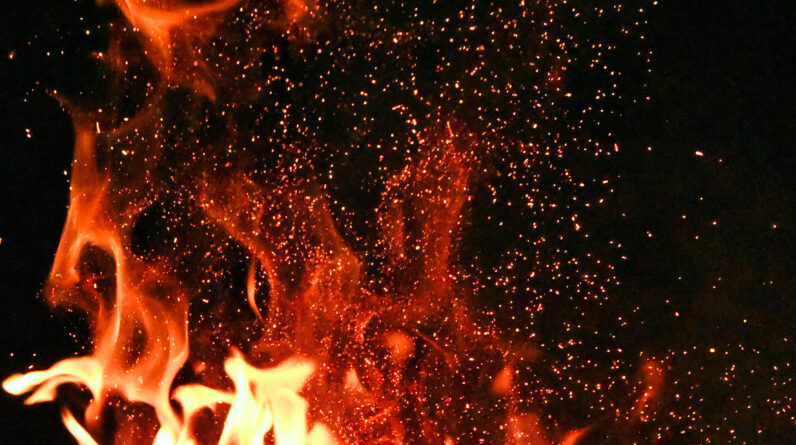
Are you tired of finding freezer burned food in your freezer? Want to make your groceries last longer? Look no further! In this article, you will find some valuable tips on how to prevent freezer burn and food spoilage. By implementing these simple tricks, you’ll be able to enjoy fresh and delicious food for much longer. Say goodbye to wasted groceries and hello to a well-stocked, perfectly preserved freezer!
Understanding Freezer Burn
Freezer burn is a common phenomenon that occurs when food is not properly stored in the freezer. It is the result of food being exposed to air, causing it to dehydrate and develop unappealing, dry spots or discoloration. While freezer burn is not harmful to consume, it can affect the texture and taste of the food. Understanding what causes freezer burn and its effects is crucial for keeping your frozen foods in optimal condition.
What is freezer burn?
Freezer burn occurs when moisture from food turns into ice crystals and then sublimates, meaning it transforms from a solid to a gas without going through the liquid stage. This process dehydrates the food, leaving it with dry spots and a leathery texture. Freezer burn can affect both packaged and unpackaged foods, although it is more common in foods that have not been properly sealed or protected from air exposure.
Causes of freezer burn
There are several factors that contribute to the development of freezer burn. Firstly, improper packaging is a common culprit. When food is not securely wrapped or sealed, air can easily come into contact with the surface, leading to freezer burn. Additionally, fluctuations in temperature within the freezer can create condensation, which in turn can cause freezer burn. Lastly, prolonged storage past the recommended duration can increase the likelihood of freezer burn.
Effects of freezer burn
While freezer burn itself is not harmful, it can have negative effects on the quality of the food. Foods that have experienced freezer burn often have a dry and tough texture and can taste bland. The appearance may also be affected, with discolored patches or a frosty texture. It is important to note that freezer burn does not make the food unsafe to eat, but it may not be as enjoyable.
Proper Packaging and Storage
Proper packaging and storage play a crucial role in preventing freezer burn and preserving the quality of your frozen foods.
Choosing the right containers
Selecting the appropriate containers for freezing is essential. Opt for containers that are specifically designed for freezer use, such as plastic freezer bags or airtight containers. These containers are designed to keep air out and prevent freezer burn. Avoid using containers that are not freezer-safe, as they may not provide sufficient protection against air exposure.
Using airtight packaging
To minimize the risk of freezer burn, it is crucial to use airtight packaging. This can include vacuum-sealed bags, airtight containers, or even heavy-duty aluminum foil. Airtight packaging helps to create a barrier between the food and the air, preventing moisture loss and freezer burn. Ensure that the packaging is tightly sealed to effectively protect the food.
Eliminating excess air
When packaging food for the freezer, it is important to eliminate excess air. Air contains moisture, which can contribute to the development of freezer burn. Squeeze out as much air as possible from plastic bags before sealing them, or use a vacuum sealer to remove air entirely. By removing excess air, you decrease the chances of moisture loss and subsequent freezer burn.
Labeling and dating
Keeping track of when food is frozen is essential for proper organization and preventing consumption of expired frozen items. Label each package with the contents and the date it was frozen. This will help you identify the oldest items and prioritize their use, reducing the chances of freezer burn resulting from long-term storage.

This image is property of foodal.com.
Organizing Your Freezer
Proper organization of your freezer not only promotes efficiency but also helps prevent freezer burn. Follow these tips to maintain a well-organized freezer.
Arranging food by date
To ensure that you utilize your frozen foods efficiently, arrange them in your freezer according to their date of freezing. Place the oldest foods in the front for easy access and use them first to avoid them from becoming freezer burned. This practice, also known as “first in, first out” (FIFO), helps you keep track of your inventory and prevents items from being forgotten and left to freezer burn.
Using the FIFO method
Implementing the FIFO method goes hand in hand with arranging food by date. FIFO stands for “first in, first out,” and it involves using the oldest items in your freezer before the newer ones. By doing so, you ensure that no food stays in the freezer for an extended period, reducing the risk of freezer burn due to prolonged storage.
Utilizing storage bins
Using storage bins or baskets in your freezer can help keep it organized and prevent freezer burn. Group similar foods together and store them in separate labeled bins. This practice not only helps you locate items easily but also prevents air circulation between different foods. Keeping the foods grouped together reduces the chances of cross-contamination and freezer burn.
Maintaining proper temperature
Maintaining a consistent temperature in your freezer is crucial for preventing freezer burn. The ideal temperature for a freezer is 0°F (-18°C) or below. Fluctuations in temperature can contribute to the formation of ice crystals and subsequent freezer burn. Regularly check your freezer’s temperature and ensure that it remains within the recommended range to preserve the quality of your frozen foods.
Freezing Techniques
In addition to proper packaging and organization, employing specific freezing techniques can further help prevent freezer burn and extend the shelf life of your frozen foods.
Blanching before freezing
Blanching is a pre-freezing technique that involves briefly immersing food in boiling water, followed by immediate cooling in ice water. By blanching certain vegetables before freezing, you can help preserve their color, texture, and nutritional value. Blanching eliminates enzymes that can cause the vegetables to deteriorate during freezing, minimizing the risk of freezer burn.
Flash-freezing
Flash-freezing is a technique commonly used to freeze individual pieces of food quickly. It involves spreading the food in a single layer on a baking sheet and placing it in the freezer for a short period. Once the individual pieces are frozen, transfer them to airtight containers or bags. Flash-freezing helps prevent the individual pieces from sticking together, allowing you to easily take out only the desired amount without disturbing the rest of the package.
Dividing into smaller portions
Dividing bulk food items into smaller portions before freezing can be beneficial for preventing freezer burn. Large quantities of food take longer to freeze and thaw, increasing the likelihood of freezer burn. By dividing the food into smaller portions, you reduce the freezing and thawing time, minimizing the exposure to changes in temperature and airflow.
Preventing ice crystals
To prevent the formation of large ice crystals, which can contribute to freezer burn, it is essential to freeze food as quickly as possible. Ensure that the foods being frozen are not warm or at room temperature, as this can create condensation and ice crystal formation. Additionally, packing the food tightly, without air gaps, and using airtight packaging can help prevent ice crystals from forming.

This image is property of www.thespruceeats.com.
Smart Shopping and Meal Planning
Making informed choices when shopping for groceries and practicing efficient meal planning can play a significant role in preventing freezer burn and reducing food spoilage.
Buying in smaller quantities
One of the key factors contributing to freezer burn is the prolonged storage of food. To minimize the risk of freezer burn, consider buying food items in smaller quantities, particularly those that are more perishable or prone to freezer burn. By purchasing only what you can reasonably consume within a shorter time frame, you reduce the chances of freezer burn due to prolonged storage.
Knowing storage limits
Understanding the storage limits of different food items is crucial for preventing freezer burn. Some foods, such as meats and poultry, have a shorter freezer shelf life compared to others. Familiarize yourself with the recommended storage times for various foods and plan your freezer inventory accordingly. This knowledge will help ensure that you use items before the quality begins to degrade and freezer burn becomes more likely.
Avoiding pre-frozen products
Pre-frozen products, such as thawed and refrozen items, are more susceptible to freezer burn. The repeated exposure to temperature changes and air circulation during the thawing and refreezing process can lead to moisture loss and freezer burn. Whenever possible, opt for fresh or never-frozen items to minimize the risk of freezer burn.
Planning meals and using leftovers
Effective meal planning and utilizing leftovers can help prevent freezer burn and reduce food waste. Plan your meals in a way that allows you to use your frozen items before they reach their recommended storage duration. Incorporate leftover ingredients into future meals, reducing the need for prolonged freezer storage. By efficiently using your frozen foods, you minimize the chances of food going to waste or developing freezer burn.
Defrosting the Right Way
When it comes to defrosting frozen foods, taking the proper approach is essential to preserve food quality and prevent freezer burn.
Slow thawing in the refrigerator
The recommended method for defrosting most foods is to thaw them slowly in the refrigerator. Place the frozen items in a container or on a plate to catch any liquids that may accumulate during thawing. Slow thawing in the refrigerator allows for a gradual temperature change, minimizing temperature fluctuations and reducing the risk of freezer burn.
Using the cold water method
If you need to defrost food quickly, you can use the cold water method. Place the frozen item in a leak-proof bag and submerge it in cold water. Change the water every 30 minutes to maintain a consistent and safe temperature. Avoid using warm or hot water, as this can promote bacterial growth and negatively impact the food’s quality. Once the food is completely thawed, cook or use it immediately to minimize the risk of freezer burn.
Avoiding room temperature thawing
Thawing frozen foods at room temperature is not recommended. This method can lead to uneven thawing, with the outside of the food thawing faster than the center. Additionally, room temperature thawing allows for longer exposure to potentially harmful bacteria. To ensure the best quality and safety of your food, avoid thawing at room temperature to prevent freezer burn and reduce the risk of foodborne illnesses.

This image is property of happymoneysaver.com.
Regular Maintenance and Cleaning
Proper maintenance and regular cleaning of your freezer are essential for preventing freezer burn and ensuring its optimal functionality.
Cleaning your freezer regularly
Regularly cleaning your freezer helps prevent the buildup of frost and ice, which can contribute to freezer burn. Empty the freezer and unplug it before cleaning. Use a mild detergent or vinegar solution to wipe down the interior, removing any spills or residue. Pay particular attention to the corners and door seals. Once cleaned, thoroughly dry the interior before restocking your freezer.
Checking for faulty seals
Faulty seals can lead to air leakage and temperature fluctuations, increasing the risk of freezer burn. Regularly inspect the door seals to ensure that they are intact and providing a tight seal. If you notice any damage or gaps, consider replacing the seals promptly to maintain a consistent and well-sealed environment within the freezer.
Removing frost build-up
Frost and ice buildup can impair the efficiency of your freezer and promote freezer burn. Regularly defrost your freezer to remove any excess frost or ice accumulation. Follow the manufacturer’s instructions for defrosting your specific freezer model. Additionally, avoid leaving the freezer door open for extended periods, as this can contribute to frost buildup and subsequent freezer burn.
Properly defrosting when needed
When your freezer develops a significant layer of frost or ice, it is crucial to defrost it properly. Remove all food items from the freezer and unplug it. Allow the ice to melt naturally or expedite the process by using a hairdryer on low heat. Once the ice has melted, clean and dry the interior thoroughly before plugging in the freezer and restocking it.
Understanding Shelf Life
Understanding the recommended storage times for different foods is essential for preventing freezer burn and maintaining food quality.
Knowing recommended storage times
Different foods have varying recommended storage times in the freezer. Familiarize yourself with these guidelines to prevent the risk of freezer burn due to excessive storage. Consult reputable sources or food safety organizations to determine the recommended storage times for different types of food.
Understanding expiration dates
Expiration dates can be helpful in determining the freshness and safety of foods. Pay attention to these dates when storing and using frozen foods. While freezer burn is not an indication of spoilage, it can affect the quality of the food. Use the FIFO method to prioritize the consumption of items approaching their expiration dates to minimize the chances of freezer burn resulting from extended storage.
Using FIFO for older items
As mentioned earlier, implementing the FIFO method can help you effectively manage your frozen food inventory and prevent freezer burn. When organizing your freezer, make a habit of placing older items at the front for easy identification and use. By regularly rotating your stock and using older items first, you ensure that food does not remain stored for an excessive period, reducing the likelihood of freezer burn.

This image is property of happymoneysaver.com.
Keeping Your Freezer Stocked
Maintaining a well-stocked freezer can help prevent freezer burn and ensure you always have a variety of ingredients on hand for meals.
Maintaining a full freezer
A full freezer is less prone to temperature fluctuations and can better maintain a consistent temperature throughout. Keep your freezer well-stocked, but ensure there is still sufficient air circulation to maintain proper freezing. Consider storing items such as ice packs or containers filled with water to maximize space and help maintain a steady temperature.
Using freezer-safe pantry items
Certain pantry items can be transferred to the freezer to extend their shelf life and prevent potential spoilage. Items such as nuts, flours, and grains can be stored in the freezer to maintain their freshness and prevent the development of rancidity. Transfer these items to airtight freezer-safe containers or bags to protect against freezer burn.
Vacuum sealing for long-term storage
Vacuum sealing is an effective method for extending the storage life of frozen foods as it removes excess air from the packaging. Vacuum-sealed foods are more resistant to freezer burn as they are tightly sealed and protected against air exposure. Invest in a vacuum sealer to package your foods securely and prolong their freezer life.
Utilizing Freezer Burned Food
While it is best to prevent freezer burn whenever possible, there may be instances when you discover freezer-burned food. It is important to assess whether the food is still safe to consume before deciding how to utilize it.
Safety considerations
The safety of the food should always be the top priority. If the freezer-burned food has been stored at a consistently low temperature and does not exhibit any signs of spoilage, such as an off odor or unusual texture, it is generally considered safe to eat. However, if there are any doubts about the safety of the food, it is best to discard it to avoid any potential foodborne illnesses.
Trimming off freezer burned areas
In some cases, it may be possible to salvage portions of freezer-burned food by trimming off the affected areas. If the discoloration or dryness is limited to a specific area, carefully cut away the freezer-burned section before using the remaining portion. However, keep in mind that removing freezer-burned areas may affect the overall quantity and appearance of the food.
Repurposing freezer-burned food
If the freezer-burned food is no longer suitable to consume as is, consider repurposing it in other recipes. Incorporate the freezer-burned meat into stews, soups, or casseroles where it will be cooked for a longer duration. Puree freezer-burned fruits and use them as a sauce or in baking recipes. Repurposing freezer-burned food not only prevents wastage but also helps mask any changes in texture or taste caused by freezer burn.
In conclusion, preventing freezer burn and food spoilage requires proper packaging, storage, organization, freezing techniques, smart shopping, meal planning, defrosting methods, regular maintenance, understanding shelf life, and making the most of freezer-burned food when necessary. By implementing these strategies, you can maximize the quality and safety of your frozen foods, ensuring a well-stocked freezer filled with delicious, freezer-burn-free options.

This image is property of happymoneysaver.com.
